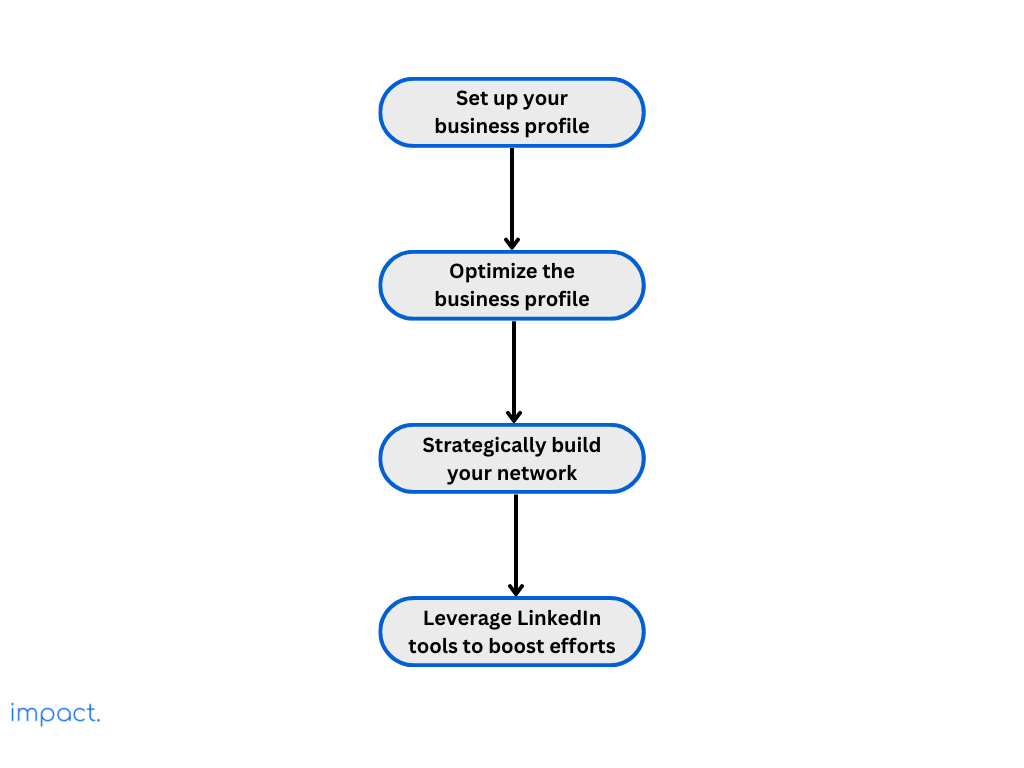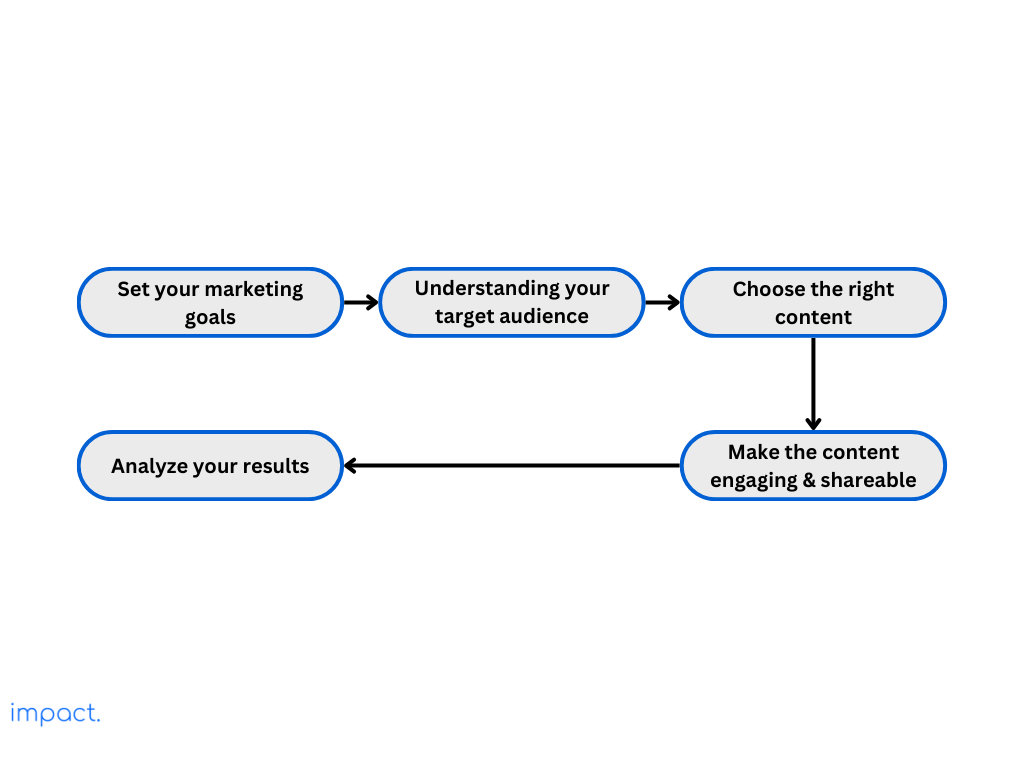Kanban: Definition, 6 Rules, and its Benefits
Kanban is a crucial part of the Just in Time (JIT) system, which we discussed…
Sean Thobias
May 17, 2025In our last piece, we discussed how to market well on Facebook, sharing tips to make the most of its many tools and users. Now, we move on to LinkedIn, another big player in social media marketing.
More professionals and businesses see the benefits of promoting themselves and networking on LinkedIn. To thrive in today’s digital world, you must understand LinkedIn marketing and how to use it effectively.
LinkedIn is a social network made for professionals. Its main aim is to help members connect with people they know and trust in their industry. It’s also helpful in finding job opportunities, learning about companies, and staying updated on industry news.
LinkedIn’s structure includes:
LinkedIn is much more professional than Facebook. It’s where you’ll find business-minded individuals like professionals, decision-makers, and industry leaders.
When you advertise here, you connect with people interested in networking and business. LinkedIn says that showing your brand and messages about getting customers here makes you six times more likely to make sales.
LinkedIn offers a trustworthy and safe environment compared to other social media sites. According to Hootsuite, more than 70% of marketers view LinkedIn as a dependable platform with a promising return on investment.
Because LinkedIn users professionally present themselves, there’s a greater trust in the content and engagements. This environment benefits businesses aiming to foster credibility and confidence among their target audience.
LinkedIn helps businesses stand out by sharing helpful content, participating in discussions, and highlighting their expertise. Businesses can establish themselves as leaders by publishing articles, joining conversations, and sharing insights.
Brands that advertise on LinkedIn are perceived as higher quality (59%), more reputable (92%), more intelligent (74%), and more respectable (59%), resulting in a 10-15% increase in short-term sales performance.
LinkedIn has more than 900 million members worldwide from 200 countries. Out of its total users, about 16.2% of LinkedIn users are active every day, with 48% being active monthly.
Whether you’re targeting a specific group or a broader audience, LinkedIn provides strong targeting options to help your marketing efforts reach the right audience. This broad reach can lead to better brand awareness, engagement, and business growth.


To create an effective LinkedIn content strategy, set clear goals to measure success first. These goals guide your content creation and help you track progress.
The various goals businesses usually aim to achieve using LinkedIn include:
Make sure your LinkedIn content strategy aligns with your business goals. That way, it can actively contribute to achieving those goals.
LinkedIn is great for reaching professionals and businesses. To make the most of it, focus on the ones relevant to your goals.
Defining your target audience helps you customize your company page and connect with the right people. So, decide who you want to reach based on location, company size, and industry.
Choose the content types that match your marketing goals and what you know about your audience for your LinkedIn strategy. The types of content usually on LinkedIn are:
Remember, LinkedIn is for professionals, so ensure your content is top-notch and informative. Consistently post high-quality content if your audience wants to read and interact with it.
Make content that catches people’s eye, makes them curious, and gets them talking. Use catchy pictures, short but powerful writing, and storytelling to make your content stick.
Add industry tips, practical advice, and interesting questions to start good conversations. Also, use LinkedIn tools like hashtags, mentions, and tagging to get seen more and make sharing easy for others.
Keep an eye on how well your LinkedIn posts are doing compared to what you want. Look at how many people engage with your posts, how many clicks on links, how fast your followers are growing, and how many conversions you get.
This analysis allows you to experiment with various post types, timing, and messaging to optimize your LinkedIn page’s performance. Keep refining your strategy to maximize its impact.
LinkedIn Groups are where people who work in similar fields chat and connect. Join groups related to your industry to talk with others, share what you know, and show that you’re an expert.
Groups can also help you see where your customers hang out online. Pay attention to what they talk about. Their discussions and questions help you create content that speaks to them.
Don’t just post on LinkedIn and forget about it. Interact with your followers to make your marketing efforts more effective.
Engage with users who comment on your posts by answering their questions, seeking feedback, and asking thought-provoking questions to encourage discussion. Being active keeps you visible in your network’s feed and helps build relationships with your connections.
Search Engine Optimization (SEO) boosts your profile’s visibility in search results on LinkedIn and search engines such as Google. This tactic helps more people discover you, particularly those seeking your skills or services.
Ensure your headline, summary, and experience sections include relevant keywords to enhance your discoverability. However, avoid excessive keyword stuffing, making your profile seem forced and unappealing.
Posting on LinkedIn once a week can lead to up to six times more followers. A consistent presence in your followers’ feeds helps them remember your expertise and services, increasing the chances that they’ll turn to you when they need what you offer.
To stay on track, create a content calendar that helps you stick to a regular posting schedule and ensures your content matches your marketing goals and audience interests. Mix curated content, original thought leadership, and promotions to keep followers engaged.
Social media marketing isn’t just about selling; it’s about genuinely building your brand. LinkedIn can help you find leads, but being too pushy won’t work.
Instead, prioritize delivering value to your audience through informative content, problem-solving, and relationship-building efforts. By establishing trust and credibility, you’ll organically create opportunities for sales over time.
Don’t make the error of sharing identical content on all your social media channels. Since many followers may overlap across platforms, avoid overwhelming them with repeated posts.
Instead, offer exclusive perks like premium resources, special deals, or invites to exclusive events. By providing these benefits, you can enhance your connections on LinkedIn and set your brand apart from competitors.
With its professional focus and robust networking features, LinkedIn is an excellent place for businesses to connect and grow. Using LinkedIn tools well, companies can boost their brand, build essential partnerships, and see results in B2B marketing.
Linking Customer Relationship Management (CRM) systems with LinkedIn can significantly improve your sales and marketing. LinkedIn is excellent for networking and finding leads. When it’s connected to your CRM, you can work more efficiently, communicate better, and use data to make smarter decisions.
McDonald, J. (2022, July 4). Social Media Marketing Workbook: How to Use Social Media for Business.
Impact Insight Team
Impact Insights Team is a group of professionals comprising individuals with expertise and experience in various aspects of business. Together, we are committed to providing in-depth insights and valuable understanding on a variety of business-related topics & industry trends to help companies achieve their goals.
See how our ERP provides better value.
Speak with our consultant to explore how we can improve your accounting, processes, and people.
